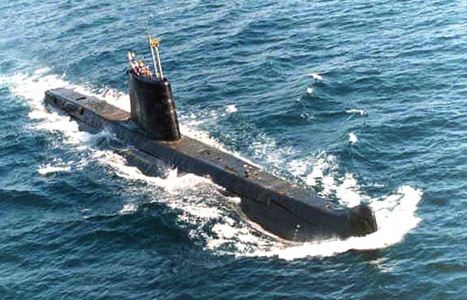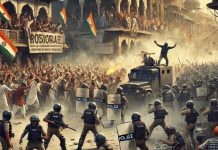Javaria Shaikh[1]
Ever since its inception, Pakistan Navy has stood as the silent sentinel of the Arabian Sea by protecting the nation’s maritime frontiers against visible and invisible threats. Its area of responsibility (AOR) spans a coastline of more than 1000kilometres which extends deep into the North Arabian Sea and encompass an Exclusive Economic Zone (EEZ) of 290,000 square kilometres. Within this vast stretch lies Pakistan’s critical sea lines of communication, ports and trade arteries which are the lifelines of country’s economy. Pakistan Navy has had to endure a persistent state of vigilance because of a hostile eastern neighbour since beginning. India with its overwhelming numerical advantage has always wanted to dominate the region’s waters. Despite that, Pakistan’s maritime custodians have ensured that the seas remain protected. For this reason, Pakistan Navy is known as the “Silent Service”: rarely in limelightbut quietly decisive and deterrent in both war and peace.
The foundation of the Navy was laid by none other than Quaid-e-Azam Muhammad Ali Jinnah.He declared at the force’s inception with pride that, “Today is a historic day for Pakistan, especially for those associated with the Navy. The State of Pakistan and along with it a new Navy – the Royal Pakistan Navy has come into existence. I am proud to be appointed its head and to serve alongside you.” He also reminded the fledgling service that although it is a small force, its responsibility ishugeand only through superior training, discipline and resolve it can stand tall against all larger adversaries.From those early days till present, Navy has progressed into a modern and professional forcewhile defending seas with unmatched courage and standing as one of Pakistan’s most reliable shields.
Indo-Pak 1965 War was primarily fought on land and in skies but sea also became a decisive theatre. Forestalling Indian naval aggression, Pakistan Navy deployed its lone submarine, PNS GHAZI, to patrol near Bombay to effectively neutralize the threat posed by Indian aircraft carrier, INS Vikrant. Psychological impact of Ghazi’s silent presence forced India to keep its carrier and much of its fleet docked, restricting their freedom of action in the Arabian Sea. However, true moment of naval glory came on the night of 7–8 September 1965, whenPakistanNavy executed Operation SOMNATH. A flotilla comprising PNS BABUR, KHYBER, BADR, JAHANGIR, ALAMGIR, SHAHJAHAN and TIPU SULTAN sailed undetectedinto enemy waters, aiming to strike India at its coastal heart.
The objectives of this operation were daring and calculated such as, to lure out the Indian carrier group so that GHAZI could engage it, to disable the radar station at Dwarkawhich guided Indian air raids over Karachi and to divert Indian attention away from the northern front and force them to reconsider their maritime vulnerability.At midnight the ships released a storm of naval gunfire. Precision salvos that destroyed Dwarka’s radar installation and ignited flames were visible for miles. Mission was accomplished within minutes. Unscathed Squadron was back in home waters by the dawn.However, success of Dwarka was both tactically decisive and psychologically profound. For the first timea smaller navy had struck at the hub of a far bigger adversary and returned without loss. The raid crippled Indian naval morale, disrupted their air operations from Jamnagar and forced their fleet into defensive harbour positions. The message was unmistakablethat ‘though Pakistan Navy is small, itis fearless and lethal.’
The 1971 conflict brought unprecedented challenges with Pakistan fighting on two fronts (East and West). This war demanded extraordinary courage from Navy against overwhelming odds. The centrepiece of this campaign was PNS HANGOR which struck a decisive blow in the Arabian Seaby destroying the Indian frigate INS Khukri, sending it to the seabed with its crew. The sinking of Khukri remains a legendary feat in naval history.
If we move fast forward to May 2025, tensions once again escalated between India and Pakistan. This time conflict extended intoNorth Arabian Sea and India sought to project dominance with its carrier strike groups, nuclear submarines and long-range maritime patrol aircraft.While the world watched anxiously, again it was Pakistan Navy that quietly shifted the balance. Pakistan Navy relied not on numbers but on strategy, readiness and resolve. Its forward deployments, stealth operations and unbroken vigilance ensured that not a single Indian warship dared approach within 400 nautical miles off Pakistan’s coastline.Despite possessing two carriers, dozens of submarines, and an expansive fleet of destroyers and frigates, India failed to mount a blockade, launch interdictionsor threaten amphibious operations. Pakistan’s trade routes remained intact, its ports were secure and its sea lines were unbroken. Moreover, at one point, an Indian P-8Ireconnaissance aircraft attempted to probe deeper but it was swiftly detected, tracked and locked. It was forced to retreat. The silent yet firm message given was clear that‘Pakistan’s maritime frontier are impregnable.’
Indian media,as always,attempted to compensate these failures through propaganda and fabricated news, claiming phantom strikes on Karachi and celebrating fictional victories with doctored visuals. However, world has seen the truth that India’s much flaunted naval supremacy had been neutralized by a smaller but more resolute force.The 2025 crisis reaffirmed what Operation SOMNATH had already proven in 1965that Pakistan Navy is unmatched in courage, discipline and deterrent value.
From Dwarka 1965 to 2025,crisis there was a consistent pattern. In both cases, India’s overwhelming naval advantage on paper was nullified by Pakistan’s superior strategy and courage. It was a bold offensive raid in 1965 that shook Indian confidenceand in 2025, it was silent deterrence that denied India’s freedom of action. Both episodes underline a truth often overlooked that Pakistan Navy is not just a supporting armbut it is a decisive shield and sword of the nation. Its deterrence lies not in loud displays but in silent readiness. It forces adversaries to think twice before crossing Pakistan’s maritime boundaries.
The history of Navy is not merely about battles fought but it is about crises prevented, seas safeguarded and deterrence maintained in silence. It is about sailors and officers who patrol the depths and expanses of the Arabian Seaensures that Pakistan’s sovereignty and survival are never compromised. Over the time, Pakistan Navy has proved that it is more than just a maritime force. They are actual guardians of Pakistan’s destiny at sea. As the nation marks Navy Day, we salute these Silent Sentinels of the Sea, the men and women who without fanfare,carry the weight of national security on their shoulders.
[1]Research Associate at Maritime Centre of Excellence at Pakistan Navy War College Lahore and a PhD Scholar of International Relations, School of Integrated Social Sciences, University of Lahore.

















